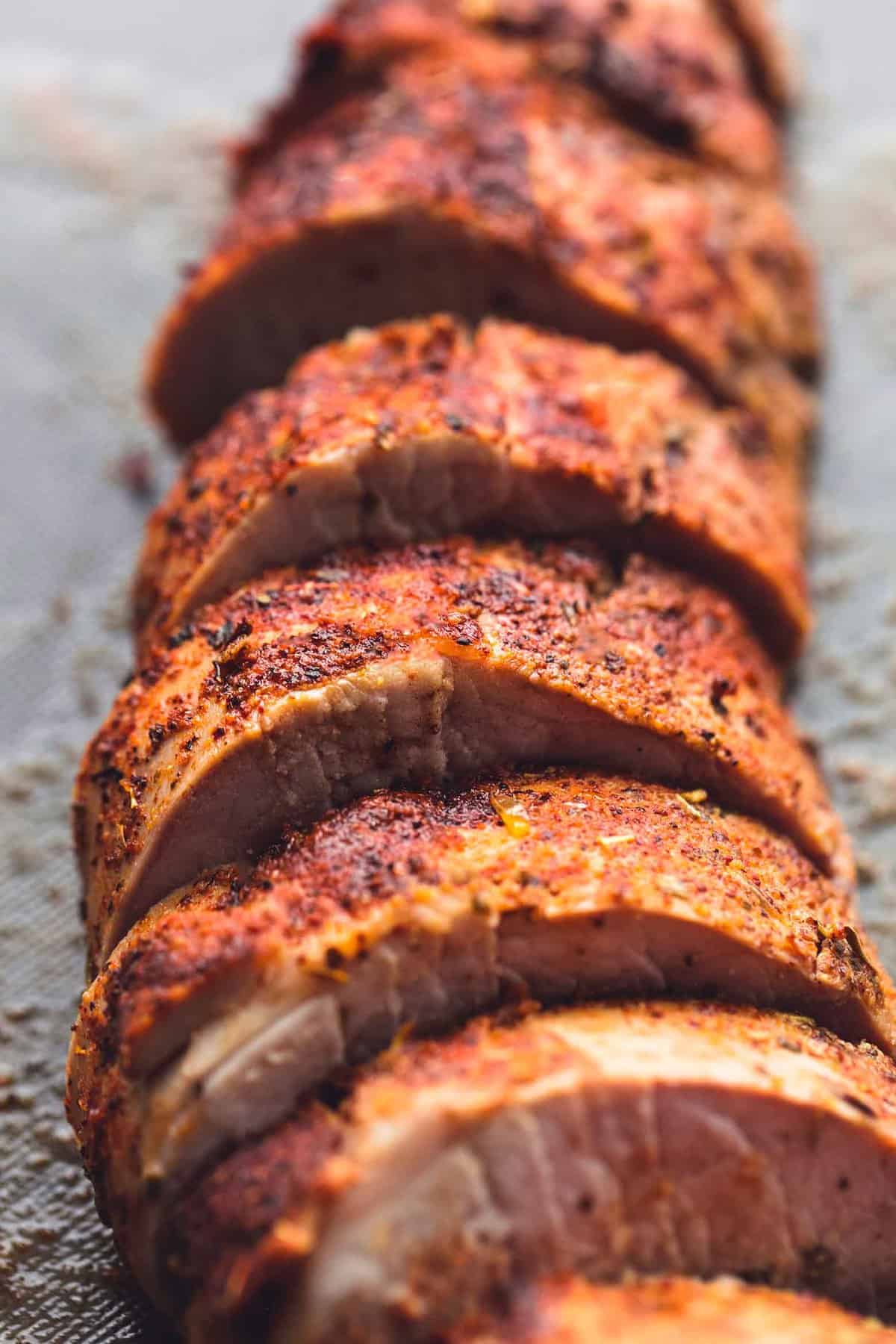This is the BEST baked pork tenderloin! It’s crispy on the outside, juicy and tender on the inside, and tastes great.
A small pork loin can be the perfect centerpiece for an easy yet impressive weeknight dinner. When prepared properly, pork loin emerges from the oven juicy, flavorful and fork-tender. Follow this simple guide to learn how to cook a small pork loin roast that your family will request again and again.
Ingredients for a Simple Pork Loin
One of the best attributes of pork loin is that it needs little in the way of fancy ingredients or complicated rubs to bring out its inherently rich, meaty flavor. For a basic roast all you need is
- 1 small boneless pork loin roast (2-3 pounds)
- 2 tablespoons olive oil
- 1 teaspoon salt
- 1 teaspoon pepper
- 1 teaspoon garlic powder
- 1 teaspoon onion powder
While this seasoning blend keeps things straightforward, feel free to customize it to your tastes. Other good options include smoked paprika, cumin, Italian herb blend or lemon pepper Just stick to 1-2 total tablespoons of seasoning so you don’t overwhelm the pork
Step-By-Step Method
Follow these simple steps for foolproof results:
1. Preheat the Oven
Heat your oven to 400°F Be sure to position a rack in the center of the oven where your roast will cook most evenly
2. Prepare the Pork Loin
Rinse the pork loin under cool water and pat dry thoroughly with paper towels. Place it on a cutting board or plate. Drizzle the olive oil all over the roast and use your hands to coat every side.
3. Apply the Seasonings
In a small bowl, stir together the salt, pepper, garlic powder and onion powder. Sprinkle the blend evenly over all sides of the oiled pork loin, pressing gently so it adheres.
4. Sear the Pork
Place the seasoned pork loin on a rimmed baking sheet or in an oven-safe pan. Roast at 400°F for 15 minutes to give it a quick sear.
5. Turn Down the Heat
After 15 minutes, lower the oven temperature to 325°F.
6. Finish Cooking
Keep roasting the pork until an instant-read meat thermometer inserted into the thickest part of it reads 140–145°F. For a 2-3 pound roast, this takes 45-60 minutes more.
7. Rest and Slice
Remove pork from the oven, tent loosely with foil and let rest 10-15 minutes before slicing into medallions. The temperature will rise 5-10 degrees as it rests.
And that’s all there is to it! With just a few basic ingredients and minimal hands-on effort, you’ll enjoy tender, juicy pork loin any night of the week.
Pork Loin Cooking Tips
Keep these tips in mind for the very best results:
-
Choose smaller roasts around 2-3 pounds. Larger cuts take longer to cook through and are prone to drying out.
-
Pat the meat very dry before seasoning. This helps the seasoning adhere evenly.
-
Position roast fat side up. The basting fat keeps the meat moist.
-
Use a meat thermometer for perfectly cooked pork every time. Stop cooking at 140-145°F.
-
Let pork rest before slicing to allow juices to reabsorb for maximum tenderness.
-
Cooking times vary due to differences in shape and thickness. Use a thermometer as your guide.
Seasoning a Simple Pork Loin
One of the great things about pork loin is that it provides a neutral canvas on which to layer flavors. Consider these easy seasoning ideas:
-
Italian Herbs – Use 2 teaspoons Italian herb blend instead of plain garlic and onion powder.
-
Citrus – Add grated orange or lemon zest along with the juice of 1 orange or lemon.
-
Southwestern – Cumin, chili powder, garlic and oregano make a fun taco-style loin.
-
Asian Inspired – Ginger, sesame oil, soy sauce and garlic lend an Asian flair.
-
Mediterranean – Rosemary, thyme, parsley and lemon transform the roast.
Get creative and use the seasonings already stocked in your pantry! Pork loin can handle assertive rubs as the mild meat soaks up lots of flavor.
Glazing Your Pork Loin
For special occasions like holidays, consider adding a sweet and sticky glaze to your pork loin in the last 15 minutes of roasting time. Brush on warmed glaze 2-3 times to allow the sugars to caramelize.
Delicious glaze options include:
- Brown sugar and bourbon
- Orange marmalade and mustard
- Sweet chili sauce
- Honey and soy sauce
- Apricot jam and balsamic vinegar
The glazed, lacquered exterior provides delicious contrast to the juicy, tender interior. Let your pork loin roast rest a full 15 minutes before slicing into a gorgeously glistening masterpiece!
Marinating Times for Extra Flavor
While a simple dry rub right before cooking is all you need for tasty pork loin, marinating does impart extra moisture and flavor. For best results:
- Marinate in the refrigerator up to 2 days for optimal flavor infusion.
- Allow 1 hour marinating time per pound of meat. A 3 lb roast marinates for 3 hours minimum.
- Place pork in a sealable bag or baking dish to marinate.
- Turn the bag or dish periodically so all sides marinate evenly.
- Pat pork dry before seasoning and roasting.
Some easy marinades include olive oil, citrus juice, herbs, garlic, vinegar, soy sauce, barbecue sauce or teriyaki sauce.
Serving Suggestions for Pork Loin
A roast pork loin makes an easy, elegant entrée for both casual family dinners and special occasions. Serve your sliced pork loin with:
- Buttery mashed potatoes or pasta
- Sauteed vegetables like snap peas, broccoli or zucchini
- A fresh salad or coleslaw
- Warm rolls or biscuits
- Applesauce or cranberry sauce
Leftover pork also shines in sandwiches, flatbread pizzas, frittatas, fried rice or noodle bowls. It freezes beautifully up to 3 months for effortless future meals.
With minimal effort, you can enjoy restaurant-quality pork loin right from your own oven any night of the week. Master this simple roast and you’ll make it again and again!
Common Questions About Cooking Pork Loin
If you’re new to cooking pork loin roast, you may have a few questions. Here are answers to some frequently asked queries:
What is the difference between pork loin and tenderloin?
Pork loin comes from the rib area and is wider and thicker. Pork tenderloin is a small, cylindrical muscle tucked under the loin. Tenderloin cooks faster.
Can you cook pork loin from frozen?
It’s best to thaw frozen pork in the refrigerator before roasting for most even cooking. Defrosting may take 24 hours.
Should pork loin roast be covered while cooking?
Roasting uncovered is best to allow humidity and moisture to escape, creating a nice browned crust. Tent only while resting.
What if my pork loin is too done before it’s cooked through?
If the outside seems overbrowned but the middle isn’t yet 140°F, tent with foil to slow additional browning.
Is pink pork safe to eat?
Yes, pork is safe when cooked to 140-145°F even if the interior has a hint of pink. Use a meat thermometer for accuracy.
An Easy Baked Pork Tenderloin Recipe
While pork loin makes a impressive roast, pork tenderloin cooks up even faster as an easy weeknight dinner. Try this recipe for baked pork tenderloin:
Ingredients:
- 1 pound pork tenderloin
- 1 tablespoon olive oil
- 1 tablespoon balsamic vinegar
- 2 cloves garlic, minced
- 1 teaspoon Italian herb blend
- 1⁄2 teaspoon salt
- 1⁄4 teaspoon pepper
** Directions: **
- Preheat oven to 425°F.
- Combine olive oil, balsamic vinegar and garlic. Coat tenderloin with mixture.
- Sprinkle with Italian herbs, salt and pepper.
- Place pork on a baking sheet or in a baking dish.
- Roast 20-25 minutes until thermometer reads 145°F.
- Let rest 5 minutes before slicing into medallions.
The tenderloin will emerge juicy and flavorful in less than 30 minutes. Round out the meal with roasted potatoes or a crisp green salad for an effortless dinner.
Conclusion
From budget-friendly choice to impressive holiday centerpiece, pork loin is one of the most versatile roasts available. Preparing a small 2-3 pound pork loin at home yields tender, succulent results every time when you follow basic roasting techniques. A simple blend of oil, salt, pepper and aromatic seasonings is all you need to let the flavor of the pork shine. Slice your rested roast into juicy medallions for elegant presentation at any meal. Master this easy method, and you’ll turn to pork loin again and again for delicious dinner in a snap.
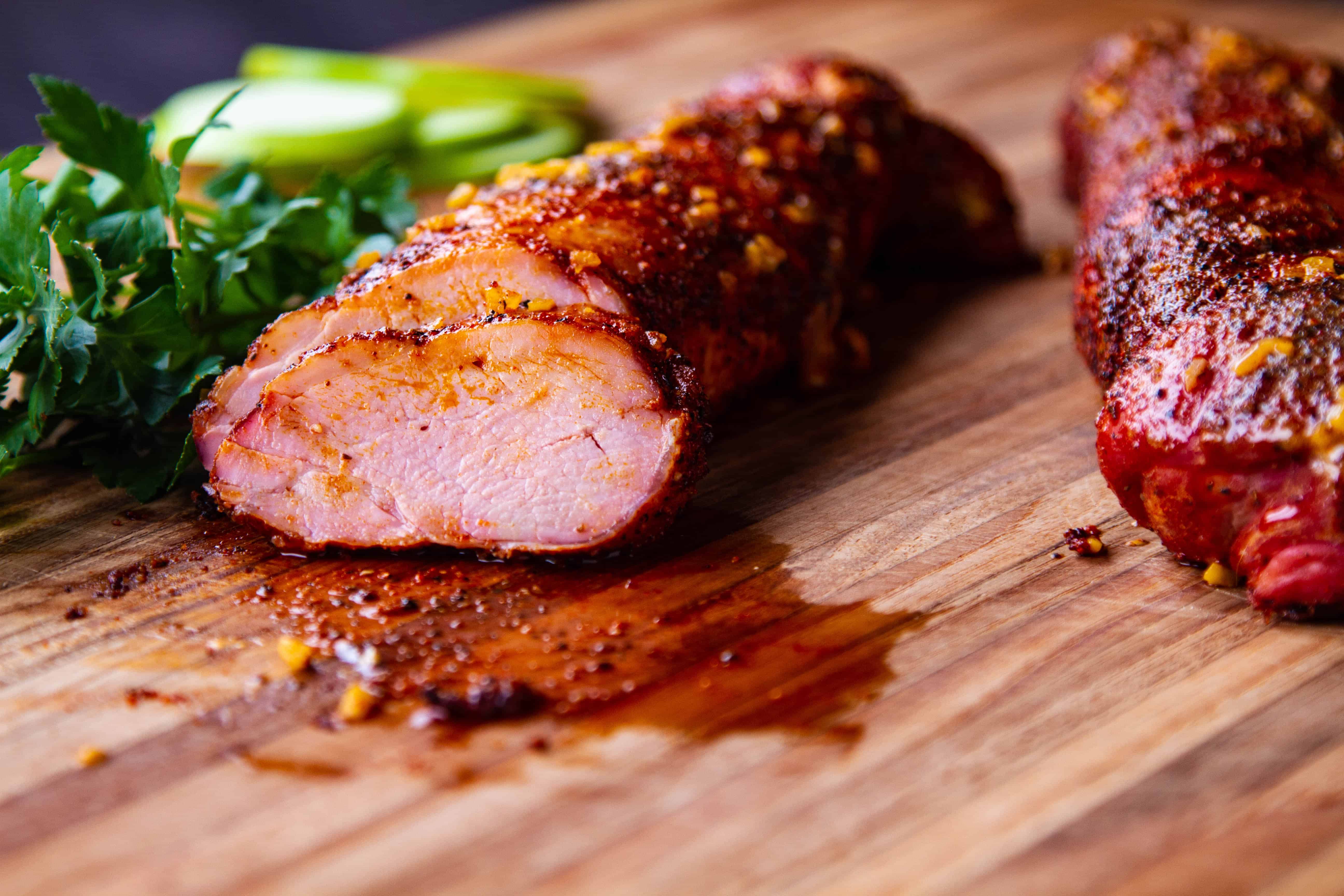
Why This Recipe Works
- Pork tenderloin—You can bake a lot of different cuts of pork, but I think baked pork tenderloin is the best. It’s really simple to make, and I think this is the best cut of pork for adding any flavor you want. You can’t really go wrong when you cook a pork tenderloin in a slow cooker, an Instant Pot, or on the grill. (Well, I’m sure there is, but I haven’t found it yet!)
- So juicy—The outside of this baked pork tenderloin is crispy, and the inside is juicy. The tenderloin is what will really make you understand why I’m crazy about this recipe. Most people eat with their eyes first. When you take a bite, you’ll taste a little crunch, then the juices from the pork, the juice you used, and the spices mixed in. It will be hard to find a reason NOT to make this tasty dish.
- Fruit juices—When I make a recipe, I like to use oils, vinegars, and sauces as “wet” ingredients that I can cook in, rub on, or spoon over the food. I forget how good fruit juices are with pork sometimes. Lemon, lime, orange, or all three juices can be used as the acid in this recipe, just like vinegar does in other ones. This gives your meat tangy (and slightly sweet) undertones. The acid also helps the other flavors get into the meat, which makes it juicy.
- Simple spices—For baked pork tenderloin, you don’t need to use a lot of different spices. Simple is best here. I put together some Italian seasoning, garlic powder, cumin, chili powder, paprika, salt, and pepper. Most of these spices are likely already in your cabinet.
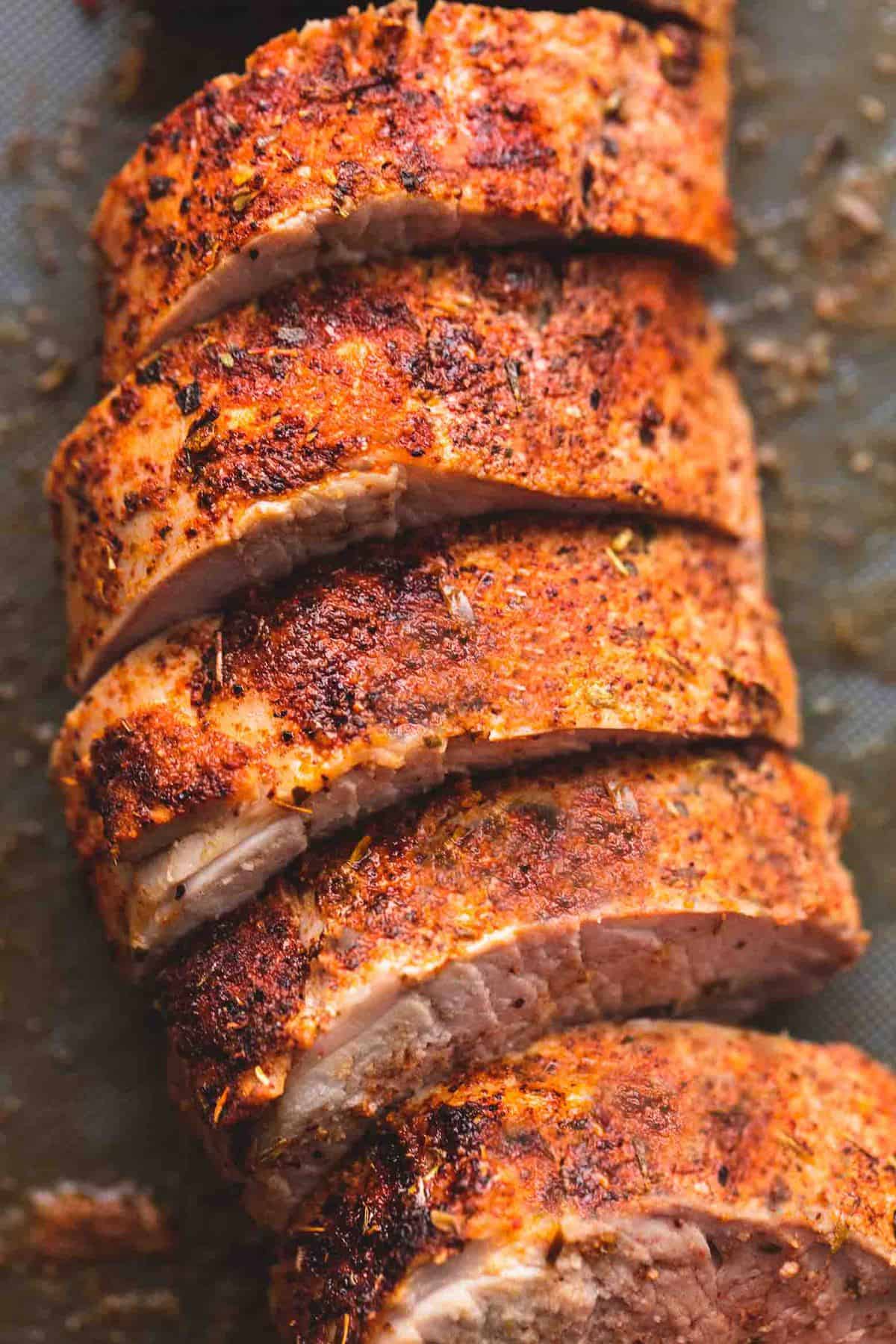
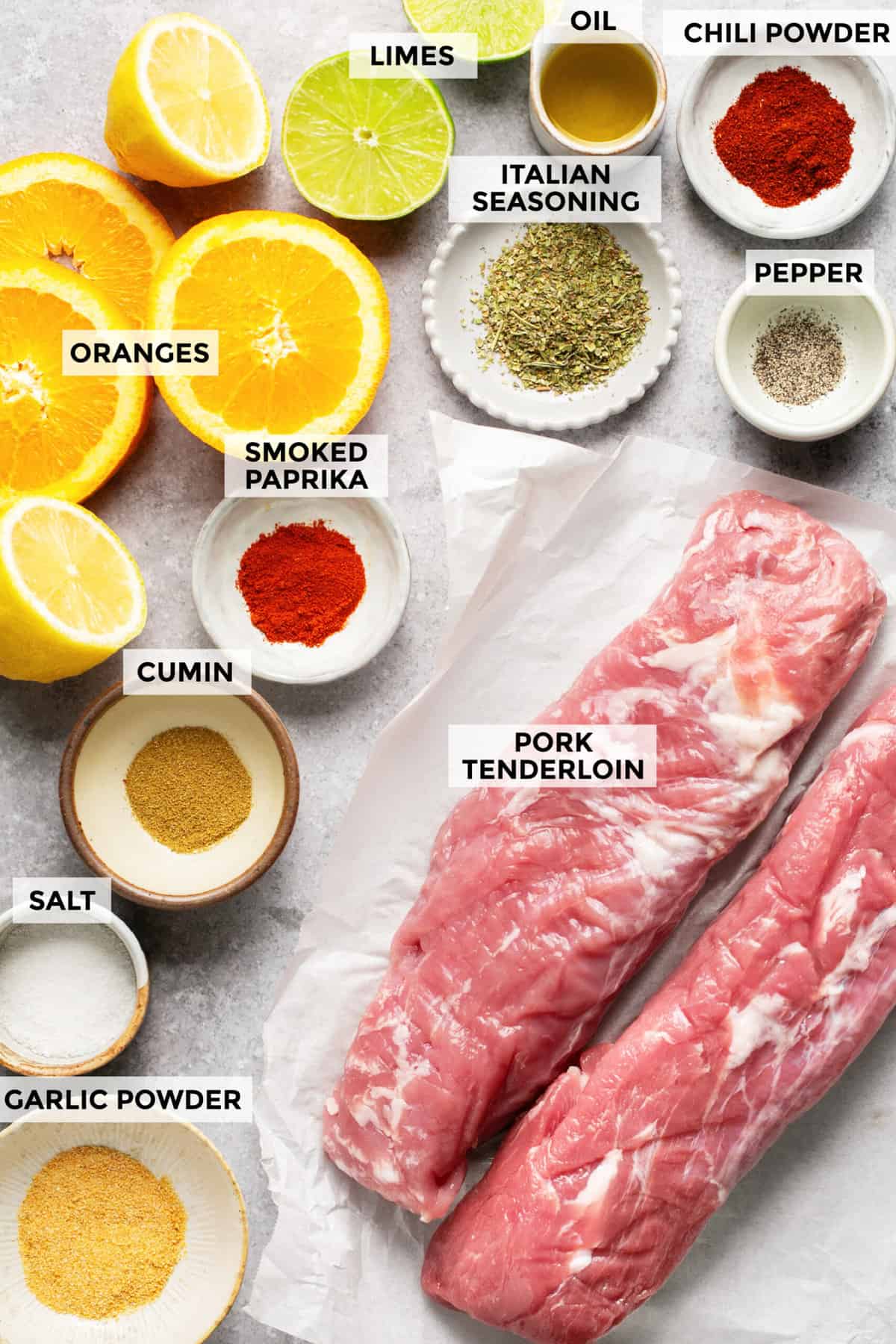
- Use one or two pork tenderloins, depending on how big they are. For four people, you’ll need at least 1 1/2 pounds of pork.
- Oil— so the outside is crispy and the inside is juicy and fall-apart-easy.
- Fresh-squeezed citrus: I like to use orange, lime, and lemon juice together. You could use chicken broth instead of fresh citrus if you can’t find any.
- Dried herbs: blends of Italian seasoning or Herbs de Provence are great.
- Garlic powder – you can substitute or add onion powder.
- Cumin—This baked pork tenderloin tastes great with cumin, which is one of my favorite spices.
- Cracked black pepper and salt—I always season meat with salt and pepper when I cook it. Necessary spices if you use nothing else.
- Added chili powder to give it a smokey and spicy taste.
- Any kind of paprika will do if you don’t have smoked paprika on hand.
Here’s How You Make It
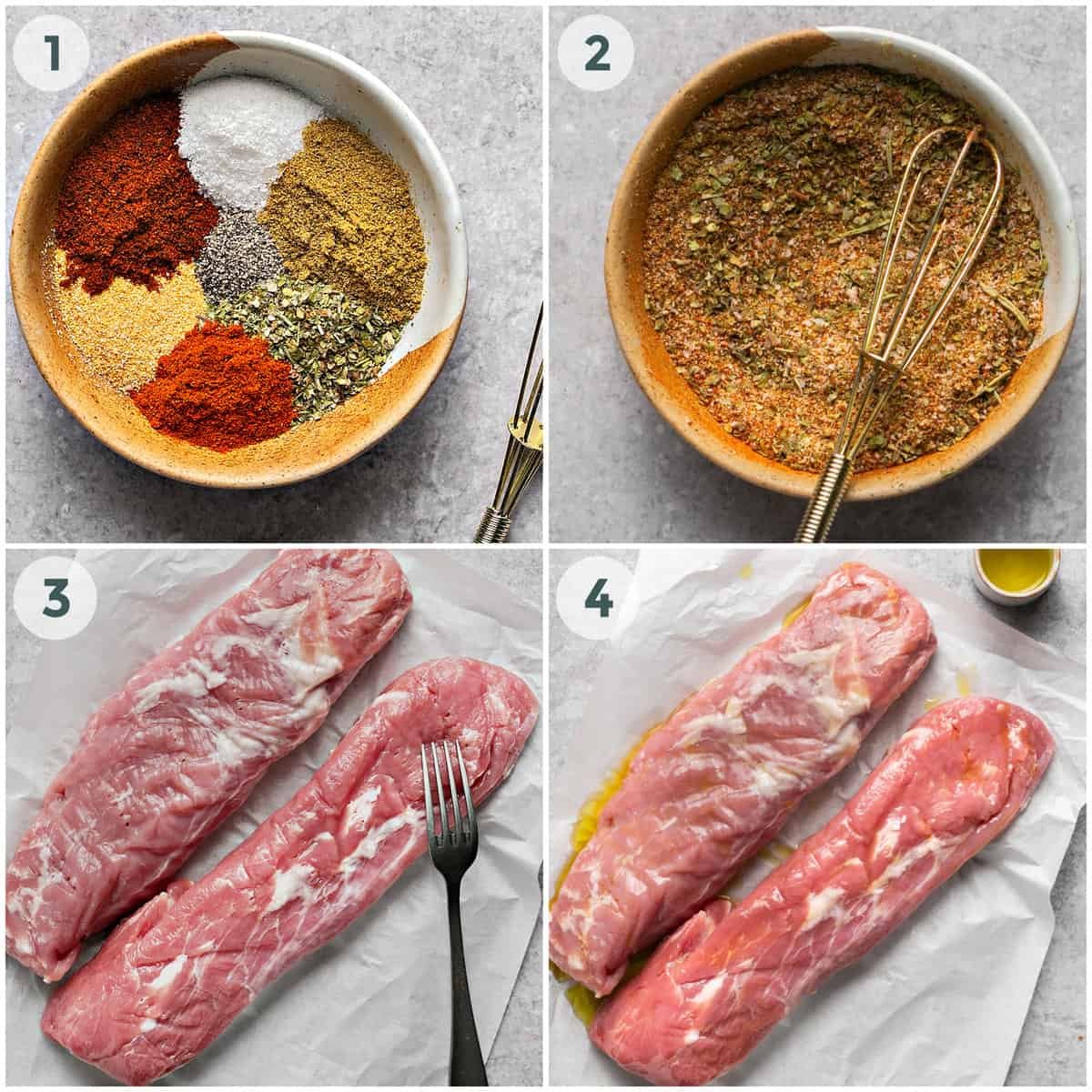
- Warm the oven up to 400 degrees and grease a baking sheet or casserole dish with a rim.
- Use a fork to poke holes in the pork all over, then rub oil all over it.
- Mix the seasonings and spices together, then sprinkle them all over the pork and press them down with your fingers.
- Place the pork in the baking dish you just prepared, and then squeeze the citrus juices all over the top.
- It should be baked for 25 to 35 minutes, or until the center temperature reaches 145 degrees.
- Pour the pan juices over the cooked pork. Let it rest for five minutes on a cutting board before cutting it up and serving.

Fruit juices are great for marinating, basting, and otherwise livening up your meat. Because citrus juices are acidic, they help to “cook” the meat a little while it’s marinating, which really seals in the flavors. They do this by breaking down the meat with the enzymes they contain. This lets the other ingredients in your marinade (oils, spices) penetrate more deeply into the meat. Ceviche is a Latin American dish that is kind of like a raw fish salad. It is made by “cooking” raw seafood in citrus juices, usually lemon or lime. Because the juice breaks down the proteins, it turns white while it’s marinating, just like it does when it’s cooked. This is best made with fresh seafood. But the principle is the same for any citrus marinade and any meat.
Recipes vary as to what is the best temperature to bake pork in the oven. However, most fall between 375-425 degrees. For this baked pork tenderloin recipe, I use 400 degrees. The meat cooks most evenly and quickly at 400 degrees, keeping the inside nice and juicy. If you’re not sure if the pork tenderloin is baked through, use a meat thermometer. Insert the thermometer into the thickest part of the meat. It should read 145 degrees fahrenheit. Don’t worry if the inside of the tenderloin is still a little pink. In fact, you might err on the side of leaving it a little pink. Also, it’s key to let the meat rest before cutting into it. This ensures it will be as juicy and tender as possible.
